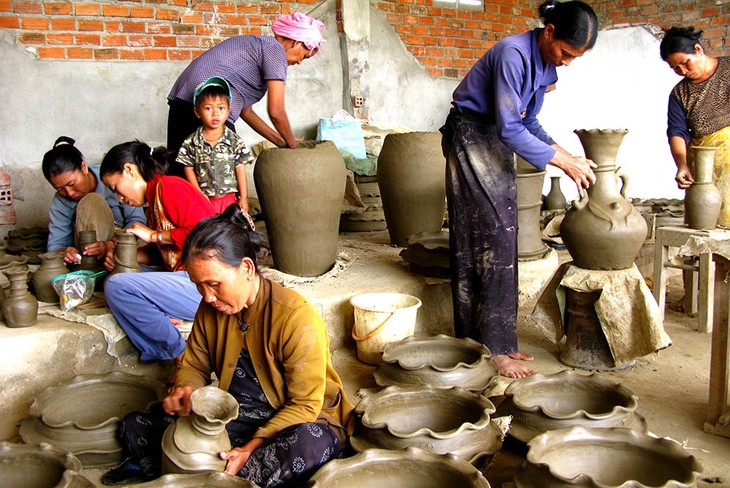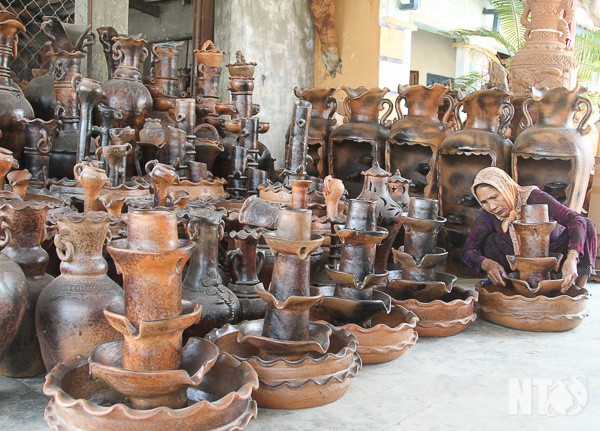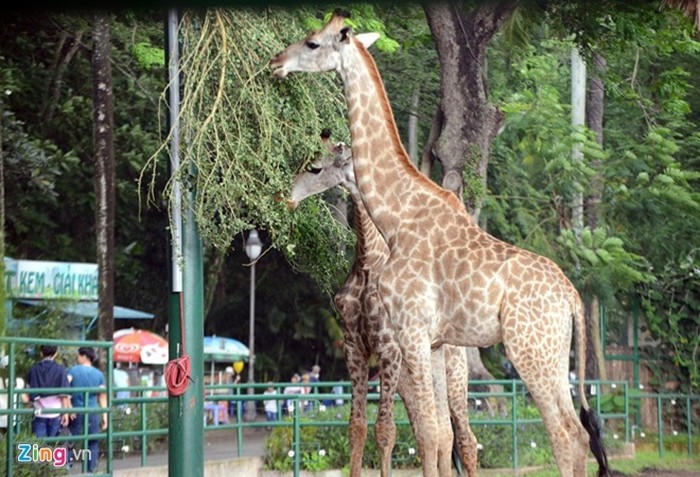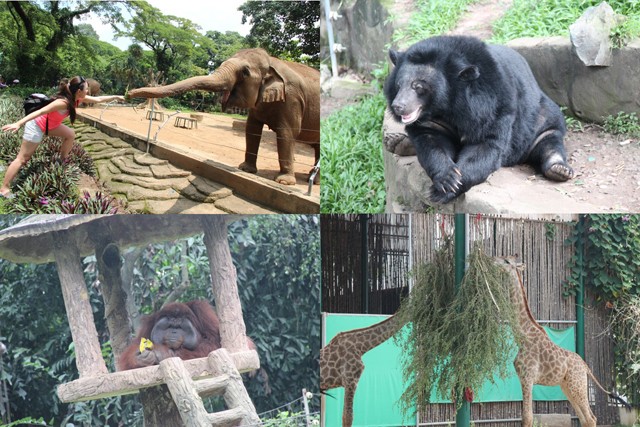B: In North America, it is common to use the word fall to denote the season, while other English-speaking countries usually call it autumn. “Spring Forward – Fall Back” is therefore a phrase most often heard in the USA and Canada. Vietnam is at the end of autumn and early of winter. But we don’t use Daylight Saving Times and we don’t have to change the clocks twice a year.
A: Last week we received manyreceptionreportsfrom listeners in India. They listened to us on 7220khz and said the signal quality was clear and stable. Didarul Iqbal, Chairman of South Asia Radio Club in Bangladesh, listened to us on 7220khz on October 16 and rated SINPO at 55445. He sent us an audio file of the program for relistening.
B: Siddharth Bhattacharjee, President of Chaitak Listeners Club in India, also listened to VOV’s English program on the frequency of 7220khz on October 30th. The overall quality was at 4 on a scale from 1 to 5. Mrs. Annchal Raj tuned in to our program on October 23 to listen to news about the General Secretary of the Communist Party of Vietnam elected as the new President and a report on public opinions.
A: We acknowledge a reception report from Shyamal Kumar Banerjee, who listened to last week’s Sunday show about a pottery village in Ninh Thuan. He asked us why it’s still a village, not a city, with such seemingly bustling production and industry.
B: Bau Truc pottery village in Ninh Thuan province is a big craft village and an attractive tourist destination, but it has not become a city due to many reasons: industrial scale, population, land area, income per capita, etc. Bau Truc Pottery village has 570 households with 4,000 people, including 100 households producing pottery. Ceramic products produced by artisans in the village are divided into two types: domestic-use pottery and arts and handicraft pottery.
 Bau Truc pottery village is one of the oldest craft village in Southeast Asia. Bau Truc pottery village is one of the oldest craft village in Southeast Asia. |
A: Each year there were over 6,000 visitors to the village, 70% Vietnamese and 30% foreign tourists, mainly from Russia, Japan, Germany and Australia. The village has focused on developing handicraft pottery products to meet the aesthetic needs of visitors as well as preserving the unique identities of the Cham culture. In order to preserve and develop Bau Truc pottery, the Ninh Thuan People’s Committee has launched a “marketing strategy project for Bau Truc handicraft pottery in the period of 2010-2015 period, with a vision extending to 2020”.
B: The province has helped veteran artisans train younger craftsmen and built an exhibition area to display Bau Truc pottery. The authorities have enhanced communications on mass media to promote the products and market them at trade fairs as well as financing households to expand production, business activities, and increase market share.
 Bau Truc pottery products. Bau Truc pottery products. |
A: Relevant agencies have submitted a proposal to have Bau Truc pottery recognized as a national intangible cultural heritage. The Ministry of Culture, Sports and Tourism will soon prepare a proposal to submit to UNESCO for recognition of Bau Truc pottery as an Intangible Cultural Heritage in Need of Urgent Safeguarding.
B: Richard Nowak of the US told us that he listened to the show on November 5 with a National NC-125 tube radio hooked up to an outdoor active loop. The signal came in very clear with SINPO at 45443.
A: He listened to the news about Prime Minister Nguyen Xuan Phuc’s activities during a trip to attend the China International Import Expo. The French Prime Minister’s visit to Vietnam and related activities were also covered,including an exhibition on French architectural landmarks in Ho Chi Minh City.
B: Richard said the Sunday Show discussed a village which is famous for pottery. A 67- year-old man was interviewed. Items discussed included cooking utensils, and tourists coming to the village to buy pottery including sought after items like flower vases and flower pots. Also, apleasant, traditional song was played. Richard commented that the show was great.
A: He added: “Cooking was discussed and the use of various spices in the cooking including lemongrass. Curry is imported from a Muslim community in Asia. A female singer with a lovely song finished the show. The news was informative, and the Sunday Show was educational and the music lovely. I especially loved the part about cooking.”
B: From Germany, Andreas Muecklich heard VOV’s English program on October 3rd on 7315khz. He said: “It was a transmission for North America. The signal was good and it was not difficult to follow the program.”
 At Thu Le zoo in Hanoi. At Thu Le zoo in Hanoi. |
A: Your notes of the program were sufficient for us to verify it. You’ll soon receive our QSL card. Marficin Stanislav of Russia tuned in to VOV program on 7280khz using a Degen receiver and noted SINPO at 45444.
B: Taslim Uddin of Bangladesh told us: “I listened to your program on November 4th. The signal was poor. This morning, I visited your website. I found some great information about your country. Thanks for this great information. I will try to write to you regularly, listen to your programs, and visit your website to get information about your station and country.”
 Asian tiger at Thu Le zoo in Hanoi. Asian tiger at Thu Le zoo in Hanoi. |
A: Thank you all for sending your reception reports. We’ll verify them and get back to you soon. We’ll now reply to some listeners’ questions on zoos in Vietnam and the protection of wildlife.
B: In Hanoi, Thu Le Park is well-known, together with another name Thu Le Zoo because it makes upa complex of a green park, a zoo, and an amusement park.
A: The zoo features more than 600 animals of more than 100 different species. Among which, 40 species are listed in the Vietnam Red Book and many are gifts from Europe, Africa, America and Australia. Some rare animals being preserved here are Indo-Chinese tigers, lions, leopards, elephants, and hippos.
 Sai Gon zoological and botanical garden. Sai Gon zoological and botanical garden. |
B: Besides sightseeing, visitors might also attend more energetic outdoor activities in the park. An interesting one should be swan boat cruising on a 6 hectare lake.
A: Meanwhile, the Sai Gon zoological and botanical garden is one of the cultural mainstays of Ho Chi Minh City.
B: Saigon Zoo is divided into several areas: animals, plants and the orchid collection, as well as recreational areas... The zoo has nearly 600 individual animals of 125 species, 260 species of plants including 23 varieties of orchids.
 Sai Gon zoological and botanical garden Sai Gon zoological and botanical garden |
A: A zoo in Dai Nam Park in Ho Chi Minh City houses 76 species of birds, reptiles and mammals, many of which are not typically found in Vietnam such as white peacocks, white tigers and white hippos. The Dai Nam Open Zoo is a unique breakthrough as it has the distinction of being the first night zoo in Vietnam. Experiencing the nocturnal animals up close will be an unforgettable adventure when visiting the zoo.
B: Wildlife protection in Vietnam has become stricter.Protected wildlife under criminal law has been extended from rare, precious and endangered animals to all types of wildlife. Under amended Penal Code 2015, hunting, catching, killing, rearing, caging, transporting and trading wild animals is criminalised. This extends to possession of dead animals, body parts and products of rare, precious and endangered wild animals.
 Sai Gon zoological and botanical garden. Sai Gon zoological and botanical garden. |
A: Since 1994, when Vietnam joined the Convention on International Trade in Endangered Species of Wild Fauna and Flora (CITES), it has contributed to the protection of rare and precious wildlife and fully legalised the treaty. Vietnam has cooperated with international organizations on wildlife protection.
B: The United States Agency for International Development (USAID) and the Ministry of Agriculture and Rural Development co-launched the USAID Saving Species project in May, focusing on protecting rhinos, elephants, and pangolins. The Deputy Minister of Agriculture and Rural Development said that efforts to intensify the protection of endangered species do not only aim to aid the direct conservation of these animals but also have a symbolic meaning, motivating the protection of all other wildlife species.
A: With a budget of approximately 10 million USD, USAID Saving Species supports the Government of Vietnam to combat wildlife trafficking through three integrated and mutually reinforcing objectives: tightening and improving the legal framework for wildlife crime; strengthening and improving law enforcement and prosecution of wildlife crime; and reducing consumer demand for illegal wildlife products.
B: That wraps up our Letter Box for today. Thank you for listening to VOV. Please join us again next Wednesday for another edition of the Letter Box. Goodbye till then.